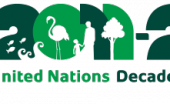Re Ian Bremmer 'Could third-party candidates upend the 2024 US election?' 3 April The current political movement in the USA…
UN Environment Programme (UNEP) 2016
Written by Diana Thebaud Nicholson // June 29, 2016 // Environment & Energy, United Nations // Comments Off on UN Environment Programme (UNEP) 2016
Kenya lags in conservation progress on delayed space tech law
(Business Daily) … while other governments had made tremendous progress in conservation and in their anti-poaching battle, Kenya continues to lag behind due to its delay to legalise use of space technology to monitor movement of endangered wildlife and large swathes of protected forests against deforestation.
An international conference on use of space technology to combat wildlife crimes and enhance biodiversity held in Nairobi heard that Kenya was incurring heavy losses worth billions of shillings due to uncontrolled illegal activities.
“We run an illegal timber trade monitoring in various countries and have successfully reduced poaching and also helped utilise the few rangers available to respond effectively before truckloads of logs leave forests. Kenyans should lobby to have this new technology available and at lower costs to ensure all areas are covered,” said Jaime Alexandra Webbe, programme management officer in charge of forests and climate change at the United Nations Environmental Programme.
Adverse climatic changes, ecosystem loss and wildlife crimes which threatened bio-diversity and wildlife could best be mitigated via use of various software applications, initiatives and projects that use space-based technologies.
These include imagery collected by earth observation satellites and satellite-derived geospatial data, satellite-communications and global navigation satellite systems – to monitor, assess and manage bio-diversity and ecosystems in support of sustainable environmental development.
27 June
Former Norwegian Minister Erik Solheim Takes Reins at UN Environment Programme
Solheim pledges to tackle major environmental issues such as ocean and air pollution, climate change, and nexus between conflict, migration and the environment
Erik Solheim, a former Minister of Environment and International Development in Norway, began his tenure today as Executive Director of the UN Environment Programme, with the concurrent position of UN Under-Secretary-General. Mr. Solheim assumes his new role as chief of the global authority on the environment after three years as head of the Development Assistance Committee (DAC) of the Organization for Economic Cooperation and Development (OECD).
In taking up office, Solheim pledged to work with countries around the world to tackle some of the most pressing environmental challenges of our time, including ocean and air pollution, the destruction of ecosystems, climate change and the relationship between the environment and conflict and migration.
He also promised to focus on environment issues close to people, such as damage to human health from air pollution.
Peat fires stoke global warming
An often neglected ecosystem, and significant contributor to climate change, is peat. When it burns or dries up huge amounts of CO2 are released.
The UK Met Office says carbon dioxide levels have seen a surge in recent months as a result of the El Niño climate phenomenon, which has warmed and dried the tropics. These conditions not only limit the ability of forests to draw CO2 from the atmosphere but also trigger huge fires around the globe that inject extra carbon into the air.
Forest fires on peatlands are particularly worrying: The 2015 forest fires in Indonesia are estimated to have generated more CO2 on some days than average daily emissions for the whole of the USA. They also caused an estimated $16.1 billion in overall economic damage (twice the value of the Aceh Tsunami Reconstruction), affected 43 million people, hospitalized 550,000 and killed 24 people.
Peatlands cover 3-5 per cent of the Earth’s surface but store over 30 per cent of all soil carbon.
The area of peatland currently classified as drained and degrading covers less than 0.4 per cent of the global land surface but is responsible for 5 per cent of global anthropogenic emissions.
REDD+ and forested peatlands
The United Nations Collaborative Programme on Reducing Emissions from Deforestation and Forest Degradation in Developing Countries (UN-REDD) was launched in 2008 and builds on the convening role and technical expertise of FAO, the United Nations Development Programme, and UNEP.
The UN-REDD Programme and its 64 partner countries look to forests for climate change solutions. But the peat lying below the forests is not being forgotten.
The UN-REDD Programme is already supporting actions targeting peat, including through an assessment of fiscal incentives for Indonesian palm oil production and the mapping of carbon stocks and great ape habitat in key forested peat areas; and key commodity producers operating on or near peatlands are being engaged in REDD+ planning and decision-making through stakeholder engagement.
Other global partnerships working on peat include the International Peatland Society, which is organizing an International Peat Congress from 15-19 August 2016 in Kuching, Malaysia, and the International Mire Conservation Group.
5 June
World Environment Day 2016 Go Wild For Life
The booming illegal trade in wildlife products is eroding Earth’s precious biodiversity, robbing us of our natural heritage and driving whole species to the brink of extinction. The killing and smuggling is also undermining economies and ecoystems, fuelling organized crime, and feeding corruption and insecurity across the globe.
Wildlife crime endangers iconic elephants, rhinos, tigers, gorillas and sea turtles. In 2011, a subspecies of Javan rhino went extinct in Vietnam, while the last western black rhinos vanished from Cameroon the same year. Great apes have disappeared from Gambia, Burkina Faso, Benin and Togo, and other countries could quickly follow. Lesser-known victims include helmeted hornbills and pangolins as well as wild orchids and timbers like Rosewood – flowers and timber are also considered wildlife!
23-27 May
16th Global Major Groups and Stakeholder Forum (GMGSF) and 2nd Session of the United Nations Environment Assembly (UNEA) of the United Nations Environment Programme (UNEP) – Delivering on the Environmental Dimension of the 2030 Agenda for Sustainable Development IISD coverage


